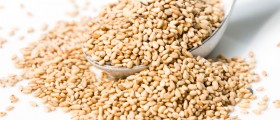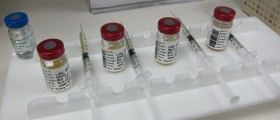Soy is one of the most frequent causes of allergies in children, and it can start as early as infancy when babies may get an allergic reaction to infant formula containing soy.
By the age of three, most children will stop experiencing these reactions although, in some cases, it may continue throughout adulthood as well. Adults can also have a soy allergy, and reactions range from mild to severe where the person may undergo anaphylactic shock, which can be life-threatening. It is important to notify the doctor of any reaction the person might have to soy, after which they can take action to prevent future or more severe reactions.
Symptoms
In most cases, soy allergies pass without any serious consequences, and signs appear minutes to an hour after the consumption of troublesome food. The person allergic to soy may experience a tingling feeling in the mouth, nausea, vomiting, diarrhea, and pains in the abdominal area, while parts of the body, such as the face, lips, tongue, and throat, may start to swell.

The person will feel dizzy, light-headed, or may even faint, and breathing may become difficult, due to a runny nose. Their skin may itch or they can get hives or eczema.
Severe Reaction to Soy
Rarely, anaphylaxis, a potentially life-threatening reaction occurs. People with asthma and those with peanut and other allergies are at a higher risk of developing the symptoms, including a rapid pulse and shock accompanied by an extreme decrease in blood pressure.
Their air passages may become blocked and breathing made harder as a result of a swelling or lump in the throat. They can feel dizzy, lightheaded, or even lose consciousness. Drooling, changes in voice quality, and flushing of the entire body are also signs of a severe reaction.
- More than 16 allergenic proteins have been discovered in soybeans. Among these proteins, ?-conglycinin 7S and glycinin 11S storage proteins are considered to be the most allergenic and represent 70%–80% of the total fraction of the globulin of the seed. Apart from the two main proteins quoted previously, we add to the list, Gly m Bd 30 K also known as P34 and Gly m Bd 28 K. Studies have shown that these four proteins mainly cause the allergenicity of soybean.
- The main way to reduce allergy risk is the identification of allergenic sites in food and their inactivation by various food-processing methods. It has been reported that food processing may lead to the modification of conformational structure of the protein or protein distortion that inhibit the binding of immunoglobulin E (IgE) to epitopes on food allergens and also the mechanism of allergic reactions.
- Food processing technologies employed for inactivating allergenic epitopes used thermal and nonthermal techniques. Currently, several detection methods including protein-based and DNA-based approaches using analytical techniques such as enzyme-linked immunosorbent assay (ELISA), enzyme allergosorbent test (EAST), radioallergosorbent test (RAST), lateral flow immunoassay (LFIA), immunoblotting, real-time polymerase chain reaction (PCR), mass spectrometry and biosensors have been improved for identifying and quantifying these epitopes.
- We are expected that in the future, the lateral flow immunoassay will become an immunological method that people will refer for allergen detection because it has the asset of being cheaper and simpler compared to the enzyme-linked immunosorbent assay, and its detection principle is generally reduced at one step, although the process requires high dose of target allergens to set off an allergenic reaction. However, some improvements related to the use of small amount of target allergen and the increase of capacity of detecting several allergens simultaneously are needed to enhance the reliability of the method.
Soy Allergy in Infants
Babies who had an allergic reaction to the milk-based formula are often switched to a soy-containing alternative, and these are the most common cases in which infants develop an allergic reaction to soy. It is best to see the doctor when the allergic reaction is in progress or a short while after the consumption of soy. In cases of anaphylaxis, it is vital to seek emergency treatment.
Prevention
In infants, breastfeeding is the only reliable way to prevent soy and other food allergies, while adult people with the soy allergy should try to stay away from soy-containing foods by reading the labels. It is essential to refrain from peanuts since soybeans and peanuts have common allergy-inducing constituents.
Carrying an emergency shot of epinephrine (adrenaline) can be prescribed to those at higher risk of severe reactions. A medical alert bracelet or a necklace is also a way to warn others that an individual may suffer from a serious allergic reaction.
- medlineplus.gov/ency/article/000817.htm
- medlineplus.gov/foodallergy.html
- Photo courtesy of United Soybean Board by Wikimedia Commons: commons.wikimedia.org/wiki/File:Soybean_Pod_%2848754451708%29.jpg

















Your thoughts on this
Loading...